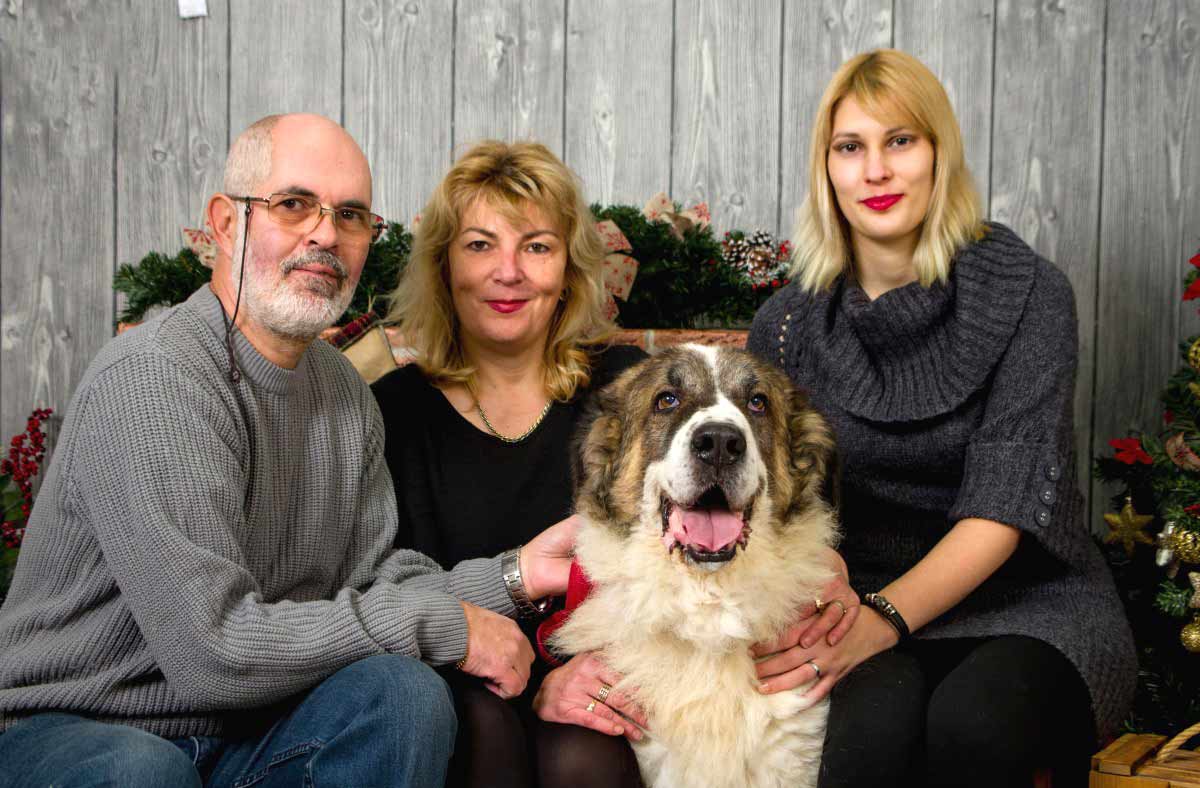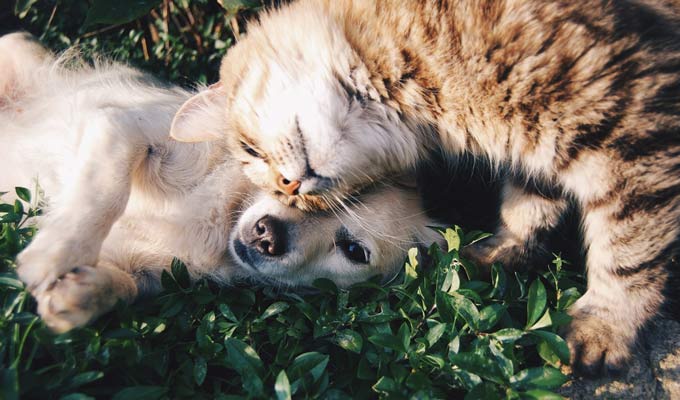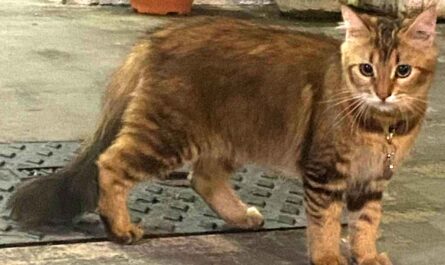What are some of the effective ways to give comfort to your senior pet? As our beloved furry companions gracefully age, like a soft-spoken whisper, they embark on a journey into their senior and even geriatric years. During this gentle transition, we start to notice the subtle markers of their dignified voyage: longer and more peaceful slumbers, the occasional challenge of standing or reclining, a cautious approach to stairs, and the occasional graceful stumble. While we cannot halt the ceaseless march of time, we have the power to ensure the comfort, safety, and happiness of our cherished pets as they embrace their golden years.
In addition to the physical transformations and limitations that come with age, our animal companions may also exhibit shifts in their cognitive and behavioral patterns. It becomes essential to entrust your veterinarian with the task of assessing your pet’s well-being and identifying any underlying medical conditions that may require attention.
Enhancing Accessibility for Your Aging Companions
As jumping becomes more challenging for pets, they may require assistance in reaching certain areas. Cats, in particular, find solace when they can oversee their domain from lofty perches. Rearranging furniture to facilitate climbing or adding steps and carpet-covered pet ladders can help them access their favored spots. For those hard-to-reach high perches, consider providing lower-level alternatives. Both dogs and cats can benefit from step stools or ramps to access cherished couches or beds.
- Cat Health Supplies on Amazon
- Cat Food Supplies on Amazon
- Cat Scratching Posts for Indoor Cats
- Cat Water Fountain on Amazon
- Cat Carrier on Amazon
- Cat Automatic Feeders on Amazon
- Cat Guide Book on Amazon
Maintaining clear and familiar ground-level paths is essential. Aging animals often grapple with vision loss, dementia, or other age-related confusion, so keeping furniture in their expected places can provide reassurance. Reducing clutter and using nightlights can further assist them in navigating their surroundings.
Ensuring the Comfort of Your Aging Pets
Most older pets contend with osteoarthritis or varying degrees of joint discomfort. They also lose muscle mass and struggle to retain warmth, necessitating new bedding for added comfort. Offering soft, supportive bedding in a warm nook or even a pet bed with heating capabilities will be a welcome addition for both cats and dogs. In chillier climates, small or short-haired breeds may require sweaters to stay cozy.
Elevated feeding stations and water bowls can alleviate neck and back discomfort, allowing them to dine without bending uncomfortably. Placing multiple bowls around the house can ensure that food and water are easily accessible, especially for pets with limited mobility.
For cats, adding another litter box can prevent accidents by ensuring relief is always nearby. Consider opting for a larger, low-sided litter box to accommodate their changing needs comfortably.
It’s equally crucial to be mindful of other discomforts your older pets may experience. Physical interactions they once cherished, like vigorous head rubs or playful nudges, may now cause discomfort, fear, or disinterest. Be attuned to their body language and responses to understand their preferences. Additionally, be aware that certain noises, such as loud beeps from household appliances, doorbells, or music, may distress them more than before. Many older pets appreciate a quiet, secure retreat in the house where they can find solace when needed.
Guidance for the Care of Senior Pets
Attending to the well-being of elderly pets necessitates the orchestration of nuanced yet pivotal modifications to their daily regimen, assiduous oversight of their veterinary requirements, and the judicious adaptation of their domicile to accommodate their evolving prerequisites. Herein, we present an array of sagacious suggestions to facilitate the provision of optimal care to your senior pet companion:
- Buy Cat Accessories on Amazon
- The Complete Guide to Adopting a Cat: Preparing for, Selecting, Raising, Training, and Loving Your New Adopted Cat or Kitten
- Amazon Best Sellers: Best Cat Training
- Amazon Best Sellers: Best Pet Cats
- Amazon Best Sellers: Best Cat Care
- Amazon Best Sellers: Best Cat Care & Health
- Amazon Best Sellers: Best Cat Breeds
Tip 1: Sustaining the Vigor of Your Senior Pet
As pets traverse the terrain of aging, the perpetuation of their regular exercise regimen assumes augmented significance. The rationale underpinning this emphasis stems from the pivotal role of muscularity in the metabolic equilibrium, with the depletion of muscle mass in older pets portending the advent of frailty syndrome, an accelerant to the aging process.
Diligent monitoring of your aging pet for any discernible wane in their activity levels becomes de rigueur. Such an ebbing vitality might presage latent maladies or discomfort, prompting prudent recourse to veterinary counsel. It merits articulation that interpreting this deceleration as an inherent facet of aging is not invariably accurate; it may oftentimes serve as a poignant indication of untreated pain.
The contemporary marvels of technology, epitomized by devices like the Whistle 3 pet GPS tracker and activity monitor, extend their aiding hand to pet proprietors in their vigilant vigil over their pet’s activity quotient. Should the metrics of activity exhibit a diminution, pet aficionados can recalibrate their pet’s fitness regimen, infusing it with additional interludes of playfulness and protracted sojourns. This regimen militates against corporeal corpulence and stands as a stalwart sentinel against the encroachments of conditions such as arthritis.
Tip 2: Routine Hematological Assessments for Your Senior Pet
In consonance with the chronicles of the time, it evolves into a sound practice to schedule periodic parleys with your veterinarian. Commensurate with the annual or biannual confabulations, it is prudent for pet guardians to bestow upon their senior pets the benison of annual hematological assessments.
These investigative protocols encompass an exhaustive panoply, encompassing the precincts of white and red blood cell tallies, as well as an appraisal of the kidneys and liver. This battery of diagnostics can perform the yeoman’s service of unraveling incipient malaises and maladies, incepting timely therapeutic interventions.
Tip 3: Indulging Your Senior Pet in the Lap of Comfort
For venerable pets grappling with the vicissitudes of conditions like arthritis and articulation ailments, the curation of a commodious resting haven becomes paramount. Considerations should revolve around the procurement of an orthopedic pet bed or the acquisition of a heated pet bed, lauded for their potential to substantiate an uptick in your aging dog’s quality of existence.
- Cat Products for Indoor Cats
- Cat Toys for Indoor Cats Best Sellers
- Surprise Subscription Boxes for Cool Cat On Amazon
- Build Your Cat Box. 1 Box Every 3 Months
- Litter Boxes for Your Lovely Kitten On Amazon
- Toilet Training Kit for Your Cute Cat On Amazon
An epochal epoch of painless, restful slumber assumes an outsized role in the lives of aging pets. This portentous interlude augments their mobility and mitigates their agony. The panacea proffered by heated pet beds, engineered to ascend to your dog’s intrinsic corporeal temperature, confers distinct advantages to senior dogs grappling with rigidity and joint maladies. Alternatively, the strategic insertion of a heated pad or mat within your dog’s resting alcove can yield similar dividends.
In the realm of warming pads, prudence favors the employment of those endowed with thermostatic controls and fail-safe mechanisms, forestalling overheating perils. A quality pet bed warmer warrants particular mention for its design predicated on the maintenance of your pet’s innate body temperature and its compatibility with a spectrum of pet beds, assiduously adhering to exacting safety benchmarks.
Tip 4: Bolstering Mobility via Pet Support Slings
For senior pets plagued by mobility tribulations, the procurement of a pet support sling or the embracement of a tailor-made pet harness can prove providential. These adjuncts assume an invaluable mantle, stepping into the breach when your pet encounters impediments to standing or ambulating.
A cornucopia of these harnesses incorporates ergonomically positioned handles on their dorsa, facilitating facile administration of support as exigencies dictate. These slings and harnesses orchestrate a choreography especially attuned to the exigencies of perambulation, traversing stairs, attending to the biological call, or embarking upon vehicular sojourns.

Tip 5: Engineering a Senescently Accommodative Habitat
Micro-adjustments woven into your home’s fabric can engender a transformative impact on the daily existence of your senior pet. These micro-transmutations are intrinsically designed to amplify their comfort quotient and facilitate their mobility. These include:
– The Adherence of Additional Carpeting: Deliberately augmenting the carpeted expanse within your dwelling’s precincts insinuates ease into your senior pet’s perambulations. The adjunct of carpeting serves as a mitigating agency, curtailing the peril of slippage on slick hardwood or unyielding tile surfaces.
- Cat Breed Book on Amazon
- Cat Behavior Book on Amazon
- Cat Training Book on Amazon
- Cat behavior Products on Amazon
- Cat Breed Test
- GPS cat, dog, and Pet trackers
- Cat leash and harness set
– Donning of Pet Socks: An investment in pet socks endowed with non-slip soles amplifies traction for your senior pet, thwarting inadvertent slips and descents.
– Installation of Pet Ramps: The incorporation of dog ramps into your living space serves as an amicable invitation to your dog, facilitating access to automobiles, stairs, or elevated furniture. The utility of ramps crescendos for senior dogs grappling with restricted mobility.
– Adoption of Elevated Food and Water Vessels: Elevating your pet’s dining experience is accomplished via the utilization of an elevated pet bowl, expediting mealtimes with palpable reductions in cranial and cervical strain, endowing a gustatory indulgence.
– Proliferation of Water Vessels: The strategic proliferation of water vessels throughout your domicile addresses the challenge posed by your senior pet’s propensity to misplace a solitary bowl. The expedition to locate sustenance is expedited by the expedient deployment of these multiple bowls. Augmenting this configuration, the diurnal utilization of nightlights augments navigational acumen, ameliorating the specter of age-diminished night vision.
Tip 6: Promoting Activity in Senior Pets
Keeping your older pet active, both mentally and physically, is vital for their well-being. Aging animals tend to sleep more soundly and may experience progressive hearing loss, making them less active. Puzzle toys can stimulate their minds and provide entertainment with the reward of treats. Engaging them in games like hide and seek or creating a “scent trail” with treats can also be enjoyable. Enhancing your backyard with features like ropes to tug or boxes to explore can offer convenient opportunities for engagement.
While long walks or hikes might be a thing of the past, shorter walks can help maintain muscle strength. Varying your route introduces new sights, sounds, and smells, adding excitement to their outings.
- Buy Bird Accessories on Amazon
- Buy Cat Accessories on Amazon
- Buy Dog Accessories on Amazon
- Buy Fish Accessories on Amazon
- Buy Pet Accessories on Amazon
This could also be an ideal time to teach new tricks, reinforcing positive behavior with plenty of rewards. Keep in mind that older pets are less active and more prone to weight gain, so consider using a portion of their daily food as training treats.
Final thought
Sharing your life with an aging pet can present challenges, but it’s crucial to recognize that your beloved companion is undergoing changes. You may be called upon to provide patient assistance in various aspects of their life, from helping them rise and recline to addressing occasional accidents.
However, your pet’s senior years can also be a profoundly rewarding time for both you and your furry friends. Cherish the moments you share, relish the unhurried pace, and savor the extra cuddles. Taking these additional steps will ensure that your pet enjoys their aging journey in a content, secure, and nurturing environment. We have considered the cat and the dog as a pet here.
More Interesting Articles
- 23 Essential Health and Care Tips for New Cat Owners
- 14 Tips How To Introduce & Habituate a Kitten to a Cat
- 15 Top Reasons to Adopt an Older Cat Is a Good Option
- Should I Get A Cat or a Kitten? 15 Tips to Take Decision
- 19 Ways Cats Show Their Love & Affection to You
- How to Bathe Your Cat: With or Without Water, Not Do-Do
- Reasons Why Does My Cat Poop on My Bed? 16 Solutions
- Why is My Cat Pooping Outside the Litter Box: 12 Reasons
- 14 Cat or Kitten Behavior: How to Understand & Handle
- 8 Reasons to Decide Which is Better for You: Cats or Dogs?
- 34 Interesting Facts People Love to Learn about A Cat
- How to Get My Cat to Successfully Use the Litter Box
- A Complete Guide: How to Find the Perfect Cat for You
- How to Cut, Clip, or Trim Cat Nails: A Beginner’s Guide
- 30 Tips to Find the Best Way to Raise A Kitten Smoothly
- Egyptian Mau Cat Breed Profile, Care, Description, Behavior
- 10 Best Food for Older Cats with Sensitive Stomachs
- 10 Best Litter Boxes for Cats That Pees Over the Side
- 5 Best Cat Food Items for Sensitive Stomach Vomiting
- Best 5 Cat Food For Sensitive Stomach and Urinary Health



